It looks like you're using an Ad Blocker.
Please white-list or disable AboveTopSecret.com in your ad-blocking tool.
Thank you.
Some features of ATS will be disabled while you continue to use an ad-blocker.
share:
a reply to: skyblueworld
There was quite a run with this image several years ago on ATS. I seem to remember the image as sharper then--maybe it has been kept but tampered with to blur it? Some viewers say it as a mining machine.
This asteroid is about the same size of the Mars' moon Phobos which also shows signs of intelligent action.
Science won't admit it, but Phobos and its smaller companion are captured asteroids. Science will say that cannot be because of the required physics doesn't work to make such captures. What they don't want to contend with is that those bodies were moved by intelligent manipulation into their fine, little orbits. The grooves on Phobos are caused--not by surface mining as some would say--but by surface materials that slipped and slid around and even off of the surface as it was moved into its current position.
There was quite a run with this image several years ago on ATS. I seem to remember the image as sharper then--maybe it has been kept but tampered with to blur it? Some viewers say it as a mining machine.
This asteroid is about the same size of the Mars' moon Phobos which also shows signs of intelligent action.
Science won't admit it, but Phobos and its smaller companion are captured asteroids. Science will say that cannot be because of the required physics doesn't work to make such captures. What they don't want to contend with is that those bodies were moved by intelligent manipulation into their fine, little orbits. The grooves on Phobos are caused--not by surface mining as some would say--but by surface materials that slipped and slid around and even off of the surface as it was moved into its current position.
a reply to: skyblueworld
I've been looking at this since it was published. I have a NASA contract background of mapping landing sites on the moon during the 'Apollo Lunar Landing mission'. In my opinion it is not a natural feature based on my off world photo interpretation experiences .
A real mystery.
I've been looking at this since it was published. I have a NASA contract background of mapping landing sites on the moon during the 'Apollo Lunar Landing mission'. In my opinion it is not a natural feature based on my off world photo interpretation experiences .
A real mystery.
Hitching a ride on a meteor/asteroid/comet would be the most energy efficient way of travelling through space if the object you are on is going in the
same direction you are going. Certainly not the safest way to travel, but would also give a little protection from micro meteors and others small
hazards. The time and distance factor doesnt matter if its a robot/probe.
We get thousands of rocks per day passing the earth, if an alien attached a probe to an asteroid or small meteor to take a few pictures and readings from Earth with a flyby, we would not know anything about it.
I think this will turn out to be like Ceres' lights, and Mars' rocks, a trick of the camera, sadly.
We get thousands of rocks per day passing the earth, if an alien attached a probe to an asteroid or small meteor to take a few pictures and readings from Earth with a flyby, we would not know anything about it.
I think this will turn out to be like Ceres' lights, and Mars' rocks, a trick of the camera, sadly.
That's not an anomaly.... It's a lense flare........ dust particle.... light refraction........ swamp gas bubble from Venus........ Due to a non
existent technical glitch that doesn't make sense....... and infrared x-rays.... star reflection gamma...... frequency wave.
There, did that sound like a typical NASA denial statement?
There, did that sound like a typical NASA denial statement?
One problem is that you've used a zooming algorithm which "invents" information. That's why you get the right angles you're seeing. You've "enhanced"
the pixels on the original image. It looks to me like a boulder with a bright spot on it.
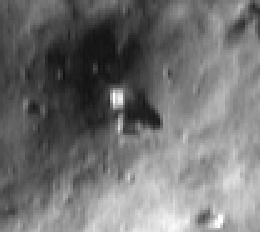
photojournal.jpl.nasa.gov...
Here's another reflective boulder.
nssdc.gsfc.nasa.gov...

Numerous craters and boulders as small as 8 meters (26 feet) across dot the landscape. The large, rectangular boulder at the upper right is 45 meters (148 feet) across.
photojournal.jpl.nasa.gov...
Here's another reflective boulder.
nssdc.gsfc.nasa.gov...
edit on 10/19/2017 by Phage because: (no reason given)
originally posted by: recrisp
Recently, somewhere, I saw it was said that it was some kind of a probe sent from the spacecraft. I saw it here, I am sure, and that's all I know about it to be honest, I just woke up.
=)
The trouble with that is the size...148 feet across.
Yet, it still looks odd, however NASA says it is a large rock, and we need to accept that the original picture is going to be somewhat better than we can see it here in second or third generation, but still NASA also says it is a rectangular formation, rather than, 'roughly triangular' ...but still, it does stick out, (perhaps due to a direct hit from the sun) given the rest of the picture in its geometry. So that seems to suggest that pixilation doesn't seem to have a huge part in the overall visual shape.
Before I read any replies to this, I saw it on Se****Te**10 and assume this is not in the Hoax bin because the image is sourced directly from NASA.
However, this is my [un-enhanced picture] opinion of it...
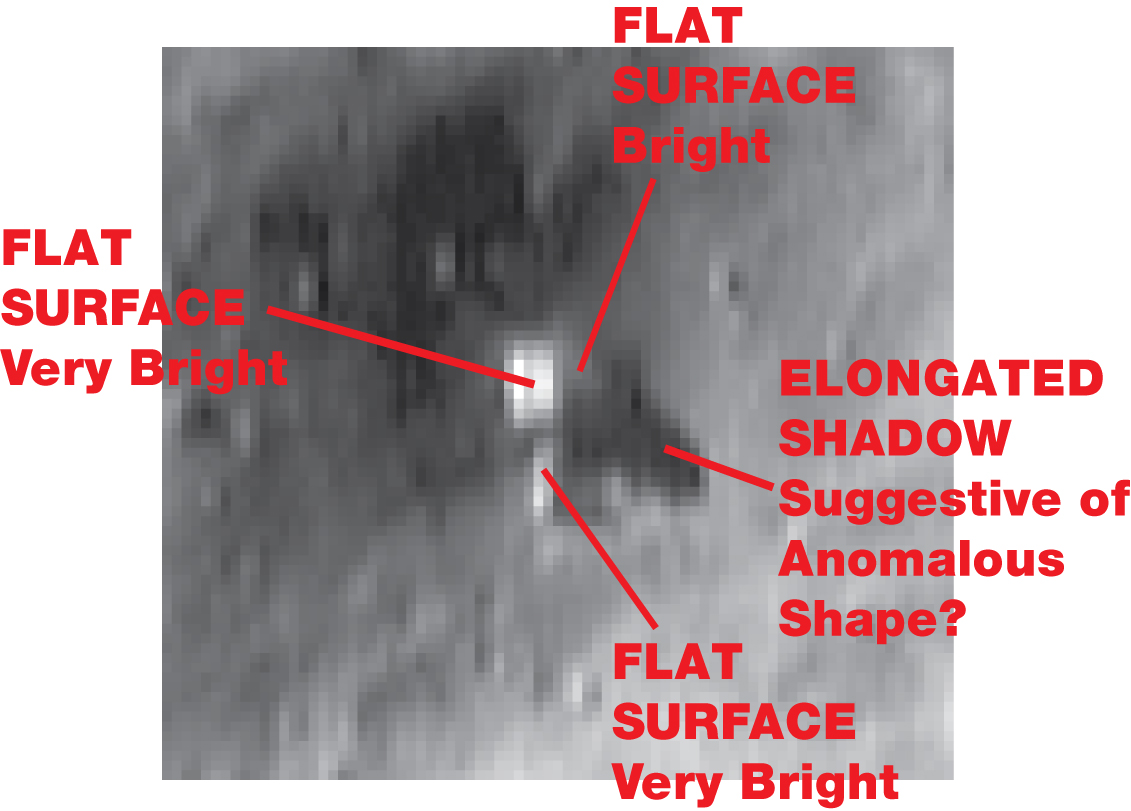
Bright, flat areas and a really strange shape for a shadow.
Nice post, OP.

Bright, flat areas and a really strange shape for a shadow.
Nice post, OP.
Looks like a mining operation to me...
Mines often have a tower and adjoining buildings for extraction of minerals/metals from ore.
Just saying...
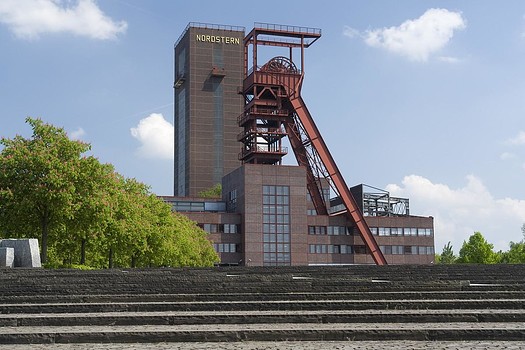
Mines often have a tower and adjoining buildings for extraction of minerals/metals from ore.
Just saying...

a reply to: skyblueworld
The image I posted is from the same source but is from the TIFF version (uncompressed) of the image. I zoomed it using a pixel resize which does not interpolate (invent information). The straight edges are the result of the low resolution (4 meters) of the original image.
It is brightly reflective like many other boulders on the asteroid.
nssdc.gsfc.nasa.gov...
nssdc.gsfc.nasa.gov...
nssdc.gsfc.nasa.gov...
The image I posted is from the same source but is from the TIFF version (uncompressed) of the image. I zoomed it using a pixel resize which does not interpolate (invent information). The straight edges are the result of the low resolution (4 meters) of the original image.
It is brightly reflective like many other boulders on the asteroid.
nssdc.gsfc.nasa.gov...
nssdc.gsfc.nasa.gov...
nssdc.gsfc.nasa.gov...
edit on 10/19/2017 by Phage because: (no reason given)
originally posted by: Phage
a reply to: skyblueworld
The image I posted is from the same source but is from the TIFF version (uncompressed) of the image. I zoomed it using a pixel resize which does not interpolate (invent information). The straight edges are the result of the low resolution (4 meters) of the original image.
It is brightly reflective like many other boulders on the asteroid.
nssdc.gsfc.nasa.gov...
nssdc.gsfc.nasa.gov...
nssdc.gsfc.nasa.gov...
Uh huh. I'm sure it most likely is a picture anomaly.
But darn it Phage, a mining operation is just way more exciting!!!
originally posted by: Macenroe82
Thats weird, it casts a shadow even.
According to the link it states:
"The large, rectangular boulder at the upper right is 45 meters (148 feet) across."
How does a "rectangular boulder" come to be, when everything around it appears to be smooth and rounded?
originally posted by: TheScale
the more i look at these photos the more the little white rectangular portion stands out to me in front of the larger square object. it doesnt cast a shadow like id expect something solid, so i was thinking maybe its some illusion with the ground but they seem to have images from all angles and it appears to be part of the main object aswell. almost looks like a large tube coming off the main object that extends out a ways then takes a 90 degree turn towards the ground. kind of like an industrial plant tube in this image
ak9.picdn.net...
Maybe that little rectangular object is not actually solid. Maybe it is semi-transparent which would, I think, result in a shadow not as deep as a solid object.
originally posted by: Aliensun
There was quite a run with this image several years ago on ATS. I seem to remember the image as sharper then--maybe it has been kept but tampered with to blur it? Some viewers say it as a mining machine.
The original is sharper because it's smaller, here's a GIF I made from the original images I found some years ago.
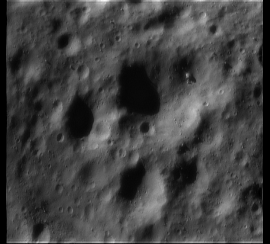
Also, the original image is stretched, as you can see below.
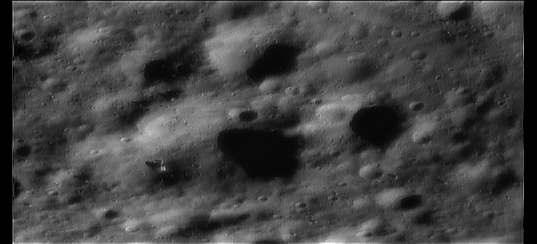
As they took several photos at the time, I made a 3 seconds video with all the images.
Science won't admit it, but Phobos and its smaller companion are captured asteroids. Science will say that cannot be because of the required physics doesn't work to make such captures.
They say that's one of the possibilities.
Edited to add the original GIF animation, as the video appears to have too much contrast and is blurred.
edit on 19/10/2017 by ArMaP because: (no reason given)
originally posted by: fromtheskydown
How does a "rectangular boulder" come to be, when everything around it appears to be smooth and rounded?
Lack of resolution and too much contrast. Zoom in the photo I posted.
originally posted by: ArMaP
originally posted by: fromtheskydown
How does a "rectangular boulder" come to be, when everything around it appears to be smooth and rounded?
Lack of resolution and too much contrast. Zoom in the photo I posted.
I did by 500% yet it still stands out like a sore thumb. I cannot understand how an object of that size and shape would naturally appear in the bottom of a crater. There are no others in the image. Granted, that may not be unusual but that image you posted appears to be bathed in some kind of soft light. Is this a filter?
new topics
-
Las Vegas UFO Spotting Teen Traumatized by Demon Creature in Backyard
Aliens and UFOs: 38 minutes ago -
2024 Pigeon Forge Rod Run - On the Strip (Video made for you)
Automotive Discussion: 1 hours ago -
Gaza Terrorists Attack US Humanitarian Pier During Construction
Middle East Issues: 1 hours ago -
The functionality of boldening and italics is clunky and no post char limit warning?
ATS Freshman's Forum: 2 hours ago -
Meadows, Giuliani Among 11 Indicted in Arizona in Latest 2020 Election Subversion Case
Mainstream News: 3 hours ago -
Massachusetts Drag Queen Leads Young Kids in Free Palestine Chant
Social Issues and Civil Unrest: 3 hours ago -
Weinstein's conviction overturned
Mainstream News: 5 hours ago -
Supreme Court Oral Arguments 4.25.2024 - Are PRESIDENTS IMMUNE From Later Being Prosecuted.
Above Politics: 6 hours ago -
Krystalnacht on today's most elite Universities?
Social Issues and Civil Unrest: 6 hours ago -
Chris Christie Wishes Death Upon Trump and Ramaswamy
Politicians & People: 7 hours ago
top topics
-
Krystalnacht on today's most elite Universities?
Social Issues and Civil Unrest: 6 hours ago, 8 flags -
Weinstein's conviction overturned
Mainstream News: 5 hours ago, 6 flags -
University of Texas Instantly Shuts Down Anti Israel Protests
Education and Media: 9 hours ago, 6 flags -
Supreme Court Oral Arguments 4.25.2024 - Are PRESIDENTS IMMUNE From Later Being Prosecuted.
Above Politics: 6 hours ago, 5 flags -
Massachusetts Drag Queen Leads Young Kids in Free Palestine Chant
Social Issues and Civil Unrest: 3 hours ago, 4 flags -
Meadows, Giuliani Among 11 Indicted in Arizona in Latest 2020 Election Subversion Case
Mainstream News: 3 hours ago, 4 flags -
Chris Christie Wishes Death Upon Trump and Ramaswamy
Politicians & People: 7 hours ago, 2 flags -
Any one suspicious of fever promotions events, major investor Goldman Sachs card only.
The Gray Area: 11 hours ago, 2 flags -
Gaza Terrorists Attack US Humanitarian Pier During Construction
Middle East Issues: 1 hours ago, 2 flags -
2024 Pigeon Forge Rod Run - On the Strip (Video made for you)
Automotive Discussion: 1 hours ago, 1 flags
active topics
-
Is there a hole at the North Pole?
ATS Skunk Works • 39 • : Athetos -
Supreme Court Oral Arguments 4.25.2024 - Are PRESIDENTS IMMUNE From Later Being Prosecuted.
Above Politics • 61 • : WeMustCare -
Las Vegas UFO Spotting Teen Traumatized by Demon Creature in Backyard
Aliens and UFOs • 4 • : KKLOCO -
Candidate TRUMP Now Has Crazy Judge JUAN MERCHAN After Him - The Stormy Daniels Hush-Money Case.
Political Conspiracies • 786 • : Annee -
University of Texas Instantly Shuts Down Anti Israel Protests
Education and Media • 189 • : CriticalStinker -
The functionality of boldening and italics is clunky and no post char limit warning?
ATS Freshman's Forum • 11 • : JonnyC555 -
Nearly 70% Of Americans Want Talks To End War In Ukraine
Political Issues • 89 • : Xtrozero -
Gaza Terrorists Attack US Humanitarian Pier During Construction
Middle East Issues • 19 • : Consvoli -
Sunak spinning the sickness figures
Other Current Events • 21 • : Xtrozero -
God's Righteousness is Greater than Our Wrath
Religion, Faith, And Theology • 30 • : confuzedcitizen

